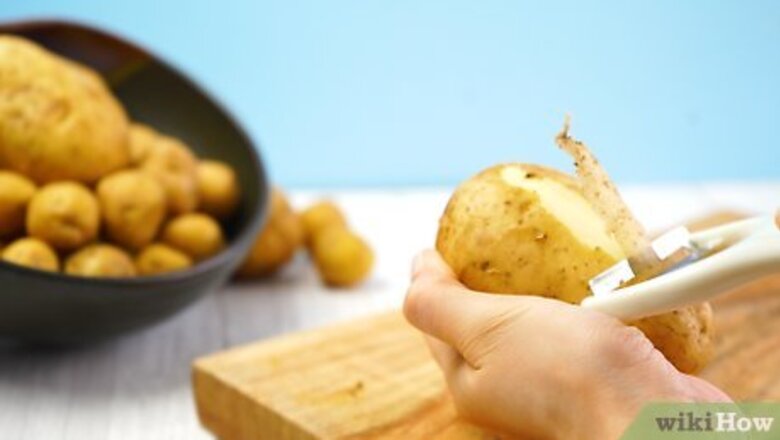
views
Starting the Blanching Process
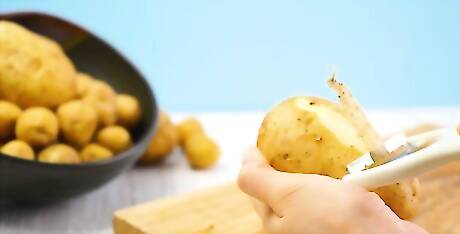
Peel the potatoes. Using a vegetable peeler, carefully put pressure on the potato skin with the peeler’s blade. Run the peeler across the potato to remove the skin. Discard the skins in a trash can. Some people prefer to keep the skin on for added nutrients. This does make the blanching process a bit longer. However, if you prefer the skins, you can skip the peeling process.
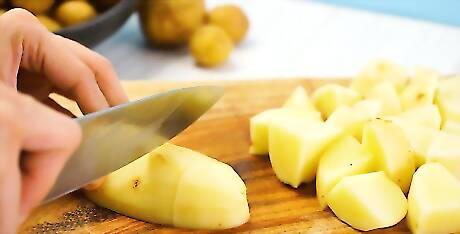
Cut the potatoes into the desired size. You should dice your potatoes to blanch them, usually cutting them into small cubes. Depending on your recipe or preference, these cubes can be bigger or smaller. If you're making something like french fries, you should cut the potatoes into wedges rather than cubes. Use a sturdy knife and a large, wooden cutting board. Place your potato on the cutting board to start. Slice it in half lengthwise, making sure the knife cuts all the way through the potato. Some potatoes may be slightly harder to cut, so do not hesitate to use some force. Take each half, and cut it into thirds lengthwise, creating large wedges. From here, you can cut these wedges into cubes. If you're making french fries, you can simply blanch the wedges.
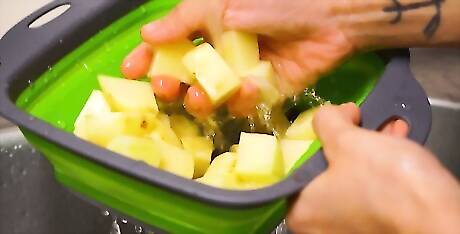
Wash the potatoes. Before adding the potatoes in the pot, it’s important to wash them to remove any starch. Get a colander and place the cut potatoes inside. Run the potatoes underwater in the sink for a couple of minutes, until all potatoes have been thoroughly washed. If there are any bits of dirt or discoloration on the potatoes, make sure to wash them out. You can usually just wash potatoes with running water. If you notice any stubborn bits of dirt or grime, you can rub these out with your hands. Just make sure to wash your hands beforehand.
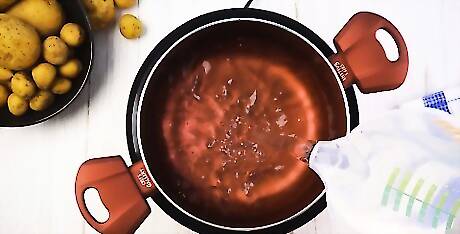
Cool a bowl of tap water to room temperature. For blanching potatoes, you want to start with room temperature water. Pour some lukewarm tap water into a pot. Wait a few minutes for the water to reach room temperature. You can usually test the water just by placing your finger in it, although you should wash your hands first. Lukewarm tap water is usually around room temperature, so it should not take long for your water to get to the right temperature to blanch potatoes.
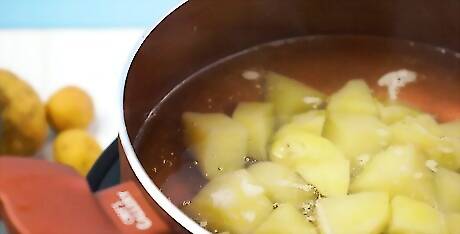
Place the potatoes over high heat until the water begins to simmer. Once the water begins to simmer, reduce the heat right away. You should avoid overcooking your potatoes during the blanching process, as this can cause them to burn easily when you cook them for a recipe. Lower the heat until the water is barely simmering. You will usually have to keep the stove at medium or low heat. Check your potatoes periodically. How long the process will take depends on how many potatoes you're blanching. To avoid accidentally cooking the potatoes, err on the side of caution. Keep the stove more towards the low setting than the medium setting. Irma S. Rombauer Irma S. Rombauer, Cookbook Author Blanching is a quick pre-cook in boiling water to partially cook vegetables. For potatoes, it's important for optimizing texture. Place washed, peeled potatoes in a pot of salted boiling water for 1-3 minutes depending on size. Use a slotted spoon to transfer potatoes directly to an ice bath to stop cooking. Pat dry before roasting or mashing.
Continuing to Blanch Your Potatoes

Prepare an ice bath while the potatoes simmer. You need to cool the potatoes in an ice bath after the simmering process. This will stop them from cooking, and can also preserve some of the color. Take a bowl big enough to fit all your potato slices. Fill it with water and add a few ice cubes until the water is chilly to the touch. As always, wash your hands before touching the cold water.

Test the potatoes with a knife after 12 minutes. It should take around 12 minutes for your potatoes to reach the right temperature. At this point, test them with a fork or knife. The potatoes should be soft on the exterior, but you should not be able to easily pass a fork or knife through the potatoes. The tip of the knife or fork should just barely go into the surface of the potato. If the fork or knife can cut through the potatoes with ease, the potatoes are cooked and not blanched. You will have to start the process over.

Cook the potatoes for longer, if necessary. If the potatoes are so hard you cannot get the tip of the fork or knife in, cook them for a couple more minutes and check again. Be vigilant about checking, however, as you do not want to accidentally cook the potatoes.
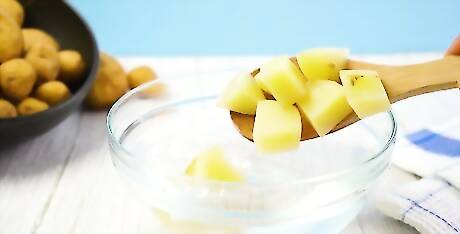
Remove the potatoes from the heat. Once the potatoes are blanched, strain them over the sink using a colander or strainer. Then, transfer the potatoes to the ice bath. Leave the potatoes in the ice bath until they're cool to the touch. Potatoes will cool quickly in the ice bath. Check them every few seconds and remove them as soon as they cool down adequately.
Using Your Blanched Potatoes
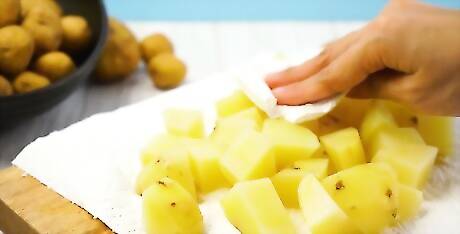
Pat the potatoes dry after they cool. Remove the potatoes from the ice bath, straining them over the sink using a colander or strainer. Set them out on a few pieces of paper towel and pat them dry.
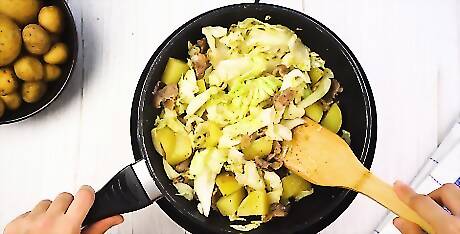
Roast, cook, or fry your potatoes. If you're using the potatoes right away, you can proceed right to the cooking process. Blanched potatoes should roast or fry quicker than regular potatoes. You can simply start cooking according to your recipe's instructions. Add spices to your potatoes. Potatoes can be a bit bland on their own, so experiment with different spices. You could go for spicy potatoes with something like cayenne pepper, or go for a savory taste with garlic salt. You can purchase spice packets at your grocery store. You can, for example, by a cajun spice packet and pour this over the potatoes after cooking them.
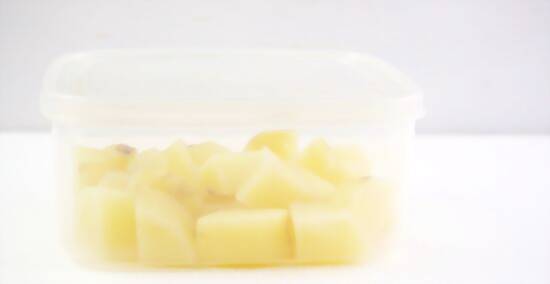
Freeze the potatoes if you want to use them for later. Blanching is often used prior to freezing vegetables to extend their shelf life. If you're freezing your potatoes, pack them into a sealable plastic container. Make sure to leave a half-inch of space between the potatoes and the container's lid. You can also use a Ziplock bag. Just make sure to squeeze out as much air as you can. For best results, freeze potatoes in a very cold freezer. This will help preserve them for the longest.


















Comments
0 comment